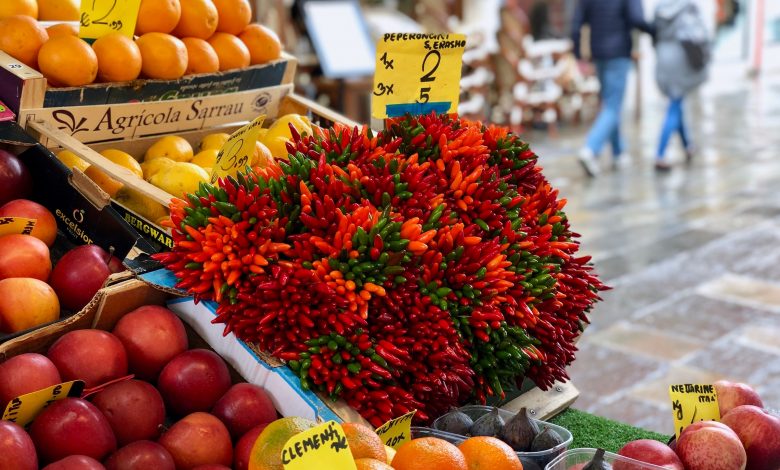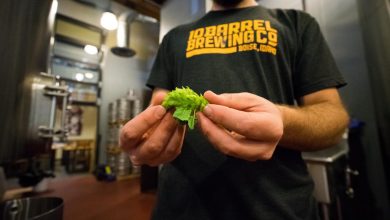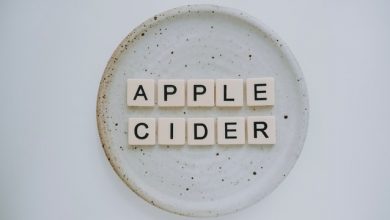How to Make Plum Wine

Mother Earth is rich with so many goodies. In a lifetime, one may never exhaust its vast reserve. However, there are certain things you shouldn’t miss out on, and one such is a glass of nicely brewed homemade plum wine made by you. This delicious after-dinner treat is super rich with vitamins and has a smooth, soothing taste that appeals to all of your senses. It’s best served chilled.
For the best part, making plum wine isn’t difficult at all, especially if you have a plum tree nearby. You can quickly get some fresh fruits and whip up an impressive plum treat. All you need is the right technique, a few ingredients, and a few easy-to-get tools, and before you know it, your plum wine is served.
In this article, we’ll guide you step by step on how to make a delicious homemade plum wine, whatever the occasion.
Types of Plums
Generally, plums vary in color and taste. There are different varieties of plums, including damsons, green gage plums, Victoria, golden plums, etcetera. The finished wine may also vary, depending on what kind of plums you used. For instance, damsons are perfect if you want a darker colored wine. If not, Victoria plums can give you a more flushed pink-colored plum wine.
While some plums are great for cooking, others are best eaten straight from the stalk. If you happen to grow any nearby, you can always get a glut and make some delicious plum wine. Today’s recipe is a simple one, and it doesn’t matter what kind of plums you have around. Whether they’re damsons, Victoria, or golden plums, this technique will produce a rare treat.
Basic Rules for Getting the Best Plum Wine
No matter what kind of plums you have, there are a few things to look out for if you’re looking to obtain a delicious output, such as:
Pick the Ripest Fruits
You need to collect the ripest fruits you can find. If your plums are riper, you’ll get better levels of sugar and juice concentration. Generally, this makes for better-tasting plum wine.
Get Enough
Plums are more fully flavored when they’re very ripe. If not, they’re thin-bodied and barely mild flavored. While using ripe fruits is essential, having the right quantity is also vital. Thankfully, plum fruits are sweet and luscious, so you won’t need too much. For instance, if you need to make a gallon of plum wine, you’ll use between 1.5 to two kilograms of plums.
Use Freshly Harvested Fruits
Garden-fresh fruits are the best. However, not everyone has plum trees lying around in their backyard, and that’s understandable. If so, you can always buy some from your local store. However, we’d recommend that you wait and get the fruit in its season instead of settling for imported plums.

Getting Your Plums Ready for Wine Making
Now that you’ve gotten your plums, it’s time to prepare them for winemaking. The process is quite simple.
First, you need to pick through the fruits, find damaged or rotten fruits and discard them.
Next, you must use clean water to wash your plums. During the process, remove the stem and leaves.
Pro Tip: Don’t wash too hard so you don’t peel off the skin from the fruit.
Afterward, boil your plum to sterilize and soften it. When it cools down, pour away the water and use clean hands to squeeze out the stones to get the plum-mush for the wine.
What Equipment Do You Need for This Recipe?
Generally, plum wine is quite easy to make, and the equipment is also pretty straightforward. For this recipe, you’ll need the following:
- Fermenting bucket
- Funnel
- Demijohn
- Carboys
- Siphon
- Medium pan
- Potato masher
- Airlock and bung
- Fine straining bag
- Hydrometer (optional)

What Ingredients Do You Need for This Recipe?
The ingredients may differ depending on how you want your finished wine to taste or look. For this simple recipe, here’s a list of items you’ll need.
- 1.8 kilograms of prepared ripe plums
- Four liters of clean water
- 1.3 kilograms of sugar
- One teaspoon of acid blend
- One Campden tablet (sulfite)
- One teaspoon of pectic enzyme
- One-quarter teaspoon of wine tannin
- One teaspoon of yeast nutrient
- One sachet of wine yeast
Method of Preparation
After you’ve gotten your equipment and ingredients in place, follow this simple method:
- Sanitize your fermentation bucket, and then place your wine straining bag inside. Afterward, put your prepared plums in it and mash them with your sanitized potato masher. This process will break up the plums and free their juices.
- Get your sanitized medium pan, pour in the water and sugar, and bring it to a boil. Ensure that the sugar dissolves completely. As soon as your water and sugar mixture boils, turn off the heat, and empty the hot sugar solution into the plums secured in your straining bag.
- Allow your plums and sugar solution to cool to room temperature. Afterward, add the Campden tablet, acid blend, tannin, and yeast nutrient, and then mix thoroughly. Leave the mixture for 12 hours. Add your pectic enzyme and mix it thoroughly again. Leave the mixture for another 24 hours.
- Sprinkle one sachet of yeast unto the top of your blend and allow it to ferment for about a week. During this period, ensure to stir it daily. A hydrometer could be useful if you have one. Take a reading just before you add your yeast.
- After a week, lift the straining bag and allow it to drain thoroughly until the juice is completely drained into the bucket underneath. Then, allow it to condition and settle for a few days.
- Rack the wine into your sanitized demijohn, and attach your airlock and bung. After that, allow it to condition and settle for a month.
- By now, the wine has cleared to a reasonable degree, and the sediments are building up. Rack up the wine into a clean sanitized demijohn again and allow it to continue to condition and settle as desired. Usually, four to five months is perfect. Afterward, you can bottle your plum wine.

Key Notes
- If you’re looking to make all-natural plum wine, then you won’t need to add any Sulfur dioxide/Sulfite (such as Campden tablets) to curb the fermentation. You’ll have to allow the yeast to die out naturally, although it can take a bit longer. Your ingredients can include the following:
- Fresh ripe plums
- Sugar
- Chlorine-free filtered clean water
- One teaspoon of fresh lemon juice (per one gallon of wine)
- One packet of champagne yeast
- Plum wine isn’t too sweet, especially if you’re making a 100 percent natural plum wine. Also, depending on the sugar level of your fruits, the wine’s alcohol level can range between 15 to 20 percent. Usually, the final taste is like that of brandy, only that it’s not distilled.
- During the fermentation process, small amounts of methanol can be produced due to the presence of pectin in the plum fruits. However, the level of methanol formed during the process of making wine (homemade or commercial) is usually meager. The danger comes with distilling it to get brandy. This process increases the methanol concentration. However, if you want to prevent methanol from forming, you must ensure that while fermenting, it isn’t contaminated with fungi, yeast, or any other pectin-loving bacteria. If any of these are present, they’ll act on the pectin and break it down into methanol. Keep everything clean and sterilized from start to finish, and you won’t have any worries.
- No matter what kind of plums you’re using, ensure to select the fully ripe ones for the best results. Usually, they don’t last beyond a day or two once they’ve ripened fully. At that full-ripe stage, they’re excellent for winemaking.
FAQs
Q: How long does it take before the plum wine is ready for bottling and consumption?
A: Well, if you keep it longer, it gets better with the taste. Generally, the waiting period can range from five months upward. Although there are other methods to get your plum wine ready quickly, if you want a fantastic taste, patience is the key.
Q: When do you remove the pits from the fruits?
A: You can decide not to remove the pits while preparing it. Instead, you can leave them in the mash and have them filtered out later on when you’re transferring the juice into the carboys. It’s quicker and much easier that way.
Q: What kind of bottles are suitable for bottling plum wine?
A: Ultimately, it depends on what you want. You can be creative. There’s no one-shoe-fits-all or mandatory packaging specifications. However, some recommendable options include plastic-pop bottles (two liters), flip-top beer bottles (one liter), and flip-top wine bottles (750 milliliters).
Q: How much water will I need to make the plum wine?
A: The quantity of water you use somewhat determines how much wine you get in the end. A gallon of water is okay for a start, but then you need an ample amount of plum fruits for that quantity.
Plums come in different varieties, from Damsons to Green Gage, Victoria, Golden plums, etc. They also vary in color: reds, yellows, purples, etc. However, one significant characteristic they have is that they all make fantastic wine. Plum wine has many nutritional benefits and makes for an excellent after-dinner treat. Hopefully, this easy-to-follow guide should help you prepare this simple homemade plum wine effortlessly.



